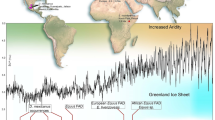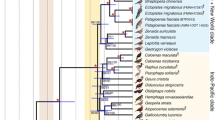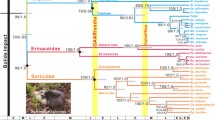Abstract
Hippidions are past members of the equid lineage which appeared in the South American fossil record around 2.5 Ma but then became extinct during the great late Pleistocene megafaunal extinction. According to fossil records and numerous dental, cranial, and postcranial characters, Hippidion and Equus lineages were expected to cluster in two distinct phylogenetic groups that diverged at least 10 MY, long before the emergence of the first Equus. However, the first DNA sequence information retrieved from Hippidion fossils supported a striking different phylogeny, with hippidions nesting inside a paraphyletic group of Equus. This result indicated either that the currently accepted phylogenetic tree of equids was incorrect regarding the timing of the evolutionary split between Hippidion and Equus or that the taxonomic identification of the hippidion fossils used for DNA analysis needed to be reexamined (and attributed to another extinct South American member of the equid lineage). The most likely candidate for the latter explanation is Equus (Amerhippus) neogeus. Here, we show by retrieving new ancient mtDNA sequences that hippidions and Equus (Amerhippus) neogeus were members of two distinct lineages. Furthermore, using a rigorous phylogenetic approach, we demonstrate that while formerly the largest equid from Southern America, Equus (Amerhippus) was just a member of the species Equus caballus. This new data increases the known phenotypic plasticity of horses and consequently casts doubt on the taxonomic validity of the subgenus Equus (Amerhippus).


Similar content being viewed by others
References
Alberdi MT, Cartelle C, Prado JL (2003) El registro Pleistoceno de Equus (Amerhippus) e Hippidion (Mammalia, Perissodactyla) de Brasil. Consideraciones paleoecológicas y biogeográficas. Ameghiniana 40:173–196
Alberdi MT, Prado JL, Prieto A (2005) Considerations on the paper “Morphological Convergence in Hippidion and Equus (Amerhippus) South American Equids Elucidated by Ancient DNA Analysis,” by Ludovic Orlando, Véra Eisenmann, Frédéric Reynier, Paul Sondaar, and Catherine Hänni. J Mol Evol 61:145–147
Azzaroli A (1998) The genus Equus in North America. PalaeontographItal 85:1–60
Bandelt H-J, Forster P, Röhl A (1999) Median-joining networks for inferring intraspecific phylogenies. Mol Biol Evol 16:37–48
Guindon S, Lethiec F, Duroux P, Gascuel O (2005) PHYML Online—a web server for fast maximum likelihood-based phylogenetic inference. Nucleic Acids Res 33:W557–W559
Hofreiter M, Jaenicke V, Serre D, Haeseler Av A, Pääbo S (2001) DNA sequences from multiple amplifications reveal artifacts induced by cytosine deamination in ancient DNA. Nucleic Acids Res 29:4793–4799
Huelsenbeck JP, Ronquist F (2001) MRBAYES: Bayesian inference of phylogenetic trees. Bioinformatics 17:754–755
MacFadden BJ (1997) Pleistocene horses from Tarija, Bolivia, and validity of the genus Onohippidium (Mammalia: Equidae). J Vertebr Paleontol 17:199–218
Orlando L, Eisenmann V, Reynier F, Sondaar P, Hänni C (2003) Morphological convergence in Hippidion and Equus (Amerhippus) southern-american equids elucidated by ancient DNA analysis. J Mol Evol 57 (Suppl 1):S29–S40
Orlando L, Mashkour M, Burke A, Douady CJ, Eisenmann V, Hänni C (2006) Geographic distribution of an extinct equid (Equus hydruntinus: Mammalia, Equidae) revealed by morphological and genetical analyses of fossils. Mol Ecol 15:2083–2093
Posada D, Crandall KA (1998) MODELTEST: testing the model of DNA substitution. Bioinformatics 14:817–818
Prado JL, Alberdi MT (1994) A quantitative review of the horse genus Equus from South America. Palaeontology 37:459–481
Prado JL, Alberdi MT (1996) A cladistic analysis of the horses of the tribe Equini. Palaeontology 39:663–680
Rozas J, Sánchez-DelBarrio JC, Messeguer X, Rozas R (2003) DnaSP, DNA polymorphism analyses by the coalescent and other methods. Bioinformatics 19:2496–2497
Weinstock J, Willerslev E, Sher A, Tong W, Ho SY, Rubenstein D, Storer J, Burns J, Martin L, Bravi C, Prieto A, Froese D, Scott E, Xulong L, Cooper A (2005) Evolution, systematics, and phylogeography of pleistocene horses in the new world: a molecular perspective. PLoS Biol 3:e241
Winans MC (1989) A quantitative study of the North American fossil species of the genus Equus. In: Prothero DR, RM RM Schoch (eds) The evolution of Perissodactyls. Oxford University Press, New York, pp 262–297
Author information
Authors and Affiliations
Corresponding author
Additional information
This is a reply to the Comment published by Alberdi et al. (2005).
Electronic supplementary material
Below is the link to the electronic supplementary material.
Rights and permissions
About this article
Cite this article
Orlando, L., Male, D., Alberdi, M.T. et al. Ancient DNA Clarifies the Evolutionary History of American Late Pleistocene Equids. J Mol Evol 66, 533–538 (2008). https://doi.org/10.1007/s00239-008-9100-x
Received:
Revised:
Accepted:
Published:
Issue Date:
DOI: https://doi.org/10.1007/s00239-008-9100-x




